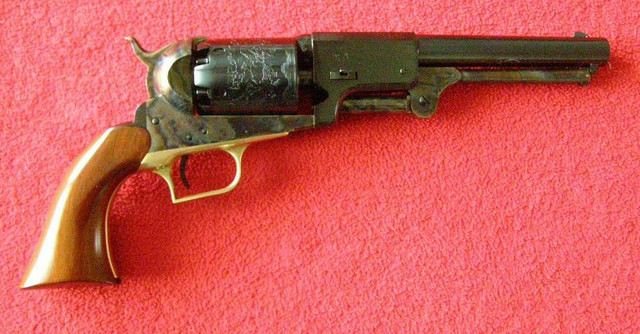Uberti likes red. There are many Pietta European hardwood grips that are reddish, but not to the extent of the Ubertis.
I have an Uberti Whitneyville Hartford Dragoon replica (2019) that is somewhat red, but not bad.

The funny part of this is what Uberti has on their website. They do not make a WH Dragoon like this these days. The original one they produced was accurate: no protruding screw ends on the right side of the frame. Can't be had these days.

And look at the wood! No such thing anymore.
Regards,
Jim
I think Uberti mixes red pigment in with the varnish, and then put way too much of it on the gun. I don't understand why they do that.









